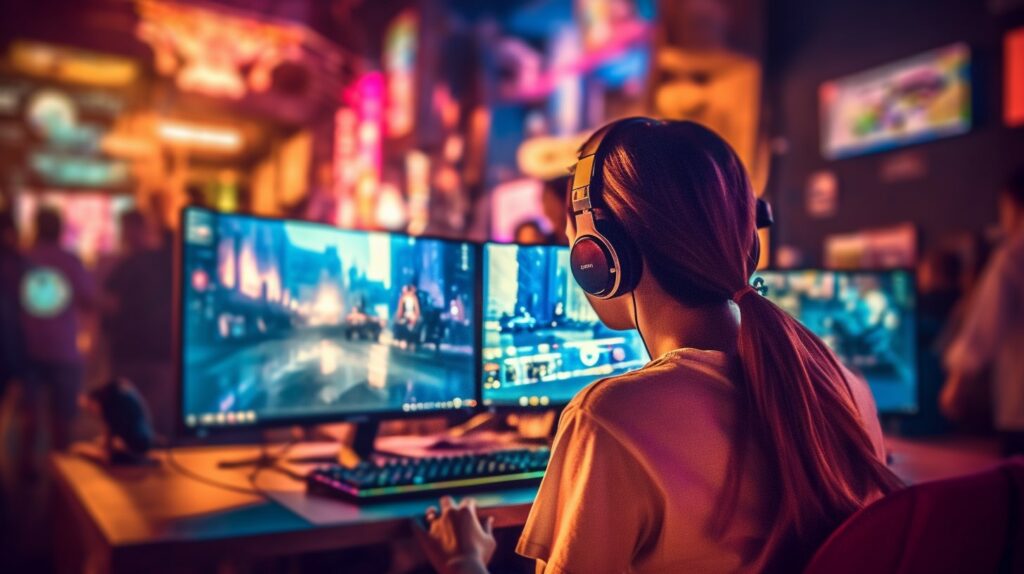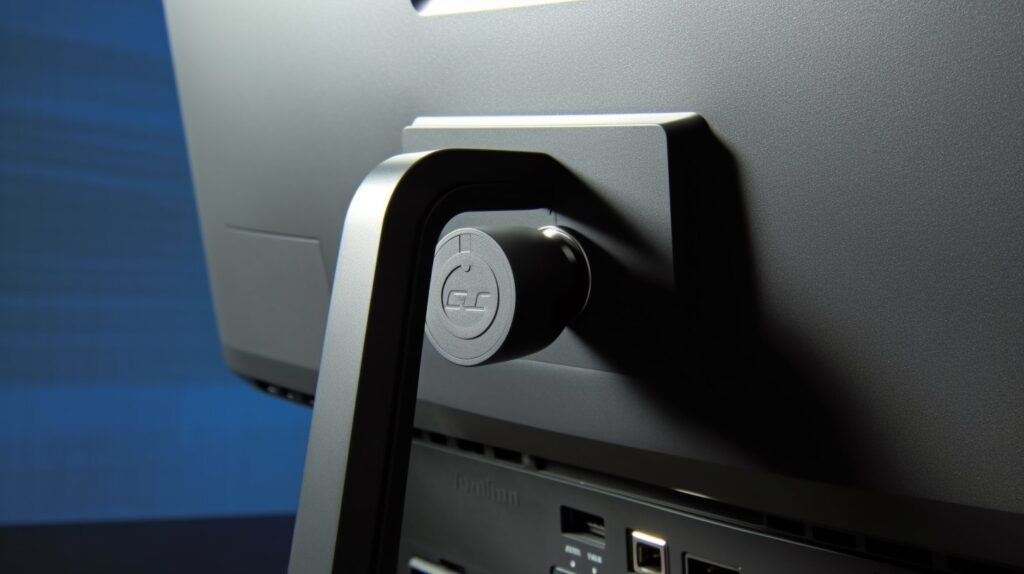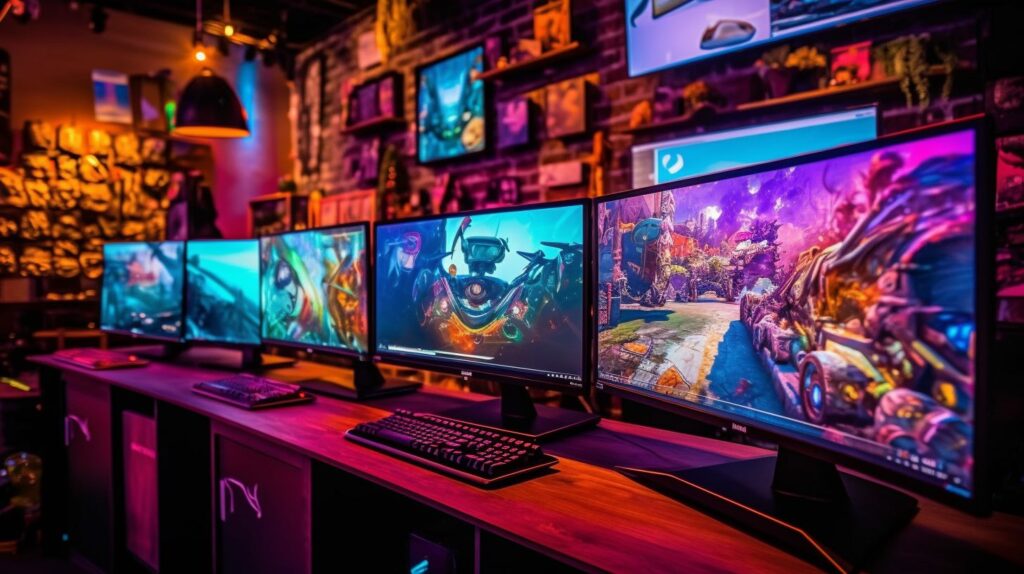Was that new monitor a bad buy after all?

Have you ever had the feeling that your display isn’t getting the most out of your game, and your performance in your game suffers as a result? Is your monitor limiting your FPS?
In this article, we’ll dive deeper into the relationship between your monitor and your FPS, the ubiquitous frames per second (FPS) that can make your gaming experience so much more enjoyable.
We’ll also discuss what role your monitor plays in refresh rate and vice versa, as well as how to optimize your monitor to get a smoother and more immersive gaming experience.
Key points summarized
- FPS (frames per second) is important for an optimal gaming experience, as it provides smoother and more realistic representations of on-screen motion.
- Your monitor does not limit your FPS in itself, except possibly with ultra-high resolutions or dual monitors.
- A higher refresh rate, fast response time and support for G-Sync or FreeSync are important features of a good gaming monitor.
What is FPS and why is it important to your gaming experience?
FPS, or frames per second, is a measure of how many images are displayed on a screen in one second.️ The higher the FPS, the smoother and more realistic the movements on your screen are… as long as your monitor’s refresh rate matches that.
This is especially crucial for gamers, as a high FPS and an appropriate refresh rate will allow you to react faster and more accurately to what’s happening in the game.
Think, for example, of reacting quickly to an opponent who suddenly appears or avoiding obstacles during a race. 🎮
When gaming, you generally want to have the highest possible FPS, because this directly affects your performance. Low FPS is an indicator that your computer is having trouble generating your game’s visuals.
The relationship between your monitor and FPS
Your monitor can play a role in the display of FPS. The only ways the monitor really affects this are:
- The resolution – rendering games at higher resolutions puts more demands on your video card and can lower your FPS;
- The amount of monitors – if you have two or more monitors that are all on while you game, this can also be a reason that your FPS drops.
I myself have two 2K/1440p monitors on my desk that get along well with each other, and luckily I have a good video card in my computer. I don’t experience any problems myself – but I’ve had them in the past when I had a cheaper monitor with a low refresh rate and an older video card.
Do not confuse the refresh rate of your monitor with FPS. The refresh rate is the number of times per second that your monitor refreshes the image and is expressed in Hertz (Hz); the FPS is the number of frames per second your video card generates.
A higher refresh rate provides a smoother image and can contribute to a better FPS experience.
If your FPS and refresh rate match, you will run into problems such as screen tearing and stuttering much less quickly, in which parts of your image are out of sync with each other. For example, the best 144Hz monitor excels at this!

How does your monitor affect your FPS?
The refresh rate of your monitor does not limit the FPS produced by your video card, but it does limit how much of it you get to see.
Imagine you have a 24-inch monitor with a refresh rate of 60 Hz, then your monitor displays a maximum of 60 frames per second. So if your video card delivers 100 FPS, you will only see 60 FPS on your screen, because your monitor simply cannot refresh its image faster.
It is therefore important that your monitor and video card are well matched. If you have a powerful video card that can deliver high FPS values, you will therefore also want a monitor that can display these images smoothly. This is how you get the most out of your gaming setup!
Refresh rates and their influence on FPS
As discussed earlier, the refresh rate is crucial for the display of FPS. There are different types of refresh rates, such as 60 Hz, 144 Hz, and 240 Hz. A higher refresh rate means the monitor refreshes its image more often, which can lead to a better FPS experience. 🌟
A 60Hz monitor refreshes the image 60 times per second, while a 144Hz monitor refreshes the image 144 times per second. This means that a 144Hz monitor can display more frames per second, giving you a smoother image.
This is especially important in fast-paced games, such as shooters or racing games for optimal immersion. And speaking of immersion: consider a curved monitor with a high refresh rate if you want to get the best out of your gaming experience!
VSync and how it can limit your FPS
VSync, or vertical sync, is a technique that makes your video card and monitor work better together: it synchronizes the number of frames per second (FPS) that your video card produces with the refresh rate of your monitor.
This prevents screen tearing, which occurs when your video card produces more images per second than your monitor can display.
But there are also disadvantages to VSync. For example, it can limit your FPS as it waits for your monitor to be ready for the next image. This in turn leads to input lag – where there is more time than expected between sending and receiving data – and a less fluid gaming experience.
It is important to know when to enable or disable VSync. In general, it’s a good idea to enable VSync if you’re experiencing screen tearing.
However, if you notice that you experience input lag or that your FPS is lower than desired, it is better to disable VSync, otherwise you will also encounter ghosting-like phenomena, which generate dragging images on your screen.
Just make sure this isn’t due to FreeSync settings – read about how to fix FreeSync ghosting first.
How do you optimize your FPS display?
I’ve already given you some hints so far, but now let’s get down to it!

1. Check your current FPS and monitor settings
To know if your monitor is limiting your FPS display, it is useful to first check your current FPS while gaming. 🎮 This can be done using software such as FRAPS, MSI Afterburner or the built-in FPS counter of your video card.
In addition, it is important to view and adjust your monitor settings.
Go to your video card’s control panel — for example, the Nvidia control panel or the AMD Radeon settings menu — and check the resolution, refresh rate, and other settings, such as FreeSync or G-Sync.
Also read our article about whether G-Sync and FreeSync work with USB-C, and find out if there might be a reason behind your G-Sync not working!
2. Optimize your video card settings for better performance
Your video card settings have a major impact on your FPS if they are not properly tuned.️ So it is important to optimize them. For Nvidia users, you can do this through the Nvidia control panel, while AMD users use the Radeon settings menu for this.
The easiest way to get there is via your desktop: press your right mouse button and find the Nvidia or AMD control panel in the list of items.
By optimizing these settings, for example by adjusting the image quality and enabling performance options, you can significantly improve your FPS.
3. Adjust your monitor refresh rate for the best FPS
Adjusting your monitor’s refresh rate also helps to optimize the FPS display. You do this by going to your video card’s control panel and adjusting the refresh rate in the screen or display settings.
Choosing the right refresh rate depends on your situation. For example, if your video card consistently produces more FPS than your current refresh rate, you may want to consider setting a higher refresh rate, and vice versa.
Make sure that your monitor actually supports this higher refresh rate!
How do you choose the right monitor for optimal FPS?
When choosing a monitor for optimal FPS display, it is important to pay attention to the resolution, refresh rate and response time.️ These characteristics influence the FPS you see while gaming.
Think about your budget and needs and choose a monitor based on that. For example, are you looking for a monitor that is also suitable for photo editing? Then read our article on the best monitor for photo editing, and keep its requirements in mind too!
Characteristics of a good gaming monitor
A good gaming monitor really makes all the difference to how smooth your footage looks and your overall gaming experience.️ But what are the most important features of such a monitor?
First, a high refresh rate is crucial. The higher the refresh rate, the smoother the images on your screen will be. This is especially important in fast-paced games where every millisecond counts. Ideally, you immediately grab a monitor with variable refresh rate (VRR), as you see with G-Sync and FreeSync.
What is VRR?
With VRR, the refresh rate adapts to the output of your video card. This is in contrast to VSync, where the output of the video card is briefly ‘held back’ before it is allowed to go through to the monitor. VRR ultimately produces much less or no strange phenomena, while that risk is more present with VSync.
In addition, a fast response time is important – the fewer milliseconds (ms), the better. This refers to the time it takes for a pixel to change color. A low response time prevents ghosting and ensures sharp images.

Frequently asked questions about monitors and FPS
There are many questions about the relationship between your monitor and your FPS. Let me answer a few frequently asked questions. ⤵️
Can a better monitor really improve my FPS?
No, a better monitor doesn’t improve the number of FPS your video card produces, but it can contribute to a better video card, but it’s not the only factor.
Your video card, processor and other hardware also play an important role. In any case, a monitor with a high refresh rate ensures that you see more of the frames per second that your video card produces, resulting in a smoother image.
However, if your PC can’t generate the extra frames, a better monitor alone won’t make much of a difference .
What is the difference between FPS and refresh rate?
FPS (frames per second) and refresh rate are closely related, but they are two different concepts. FPS refers to the number of images your video card generates per second, while the refresh rate indicates how often your monitor refreshes the image.
A higher refresh rate ensures a smoother display of the images, but only if your video card provides enough FPS – ideally a value that is close to your monitor’s refresh rate.
If your FPS is lower than your monitor’s refresh rate, you won’t benefit from a higher refresh rate. So it is important to find a balance between these two factors to ensure the best experience.
Conclusion
Now you know how important it is to have the right monitor to improve your FPS experience while gaming! A good monitor, combined with the right video card, will give you a smoother, more responsive and impressive game.
So don’t be afraid to check and optimize the settings of your video card and monitor for better performance. And if you’re in the market for a new monitor, keep in mind the refresh rate and other features that affect your FPS.
Who knows, maybe with the right monitor you will win your next gaming session!️